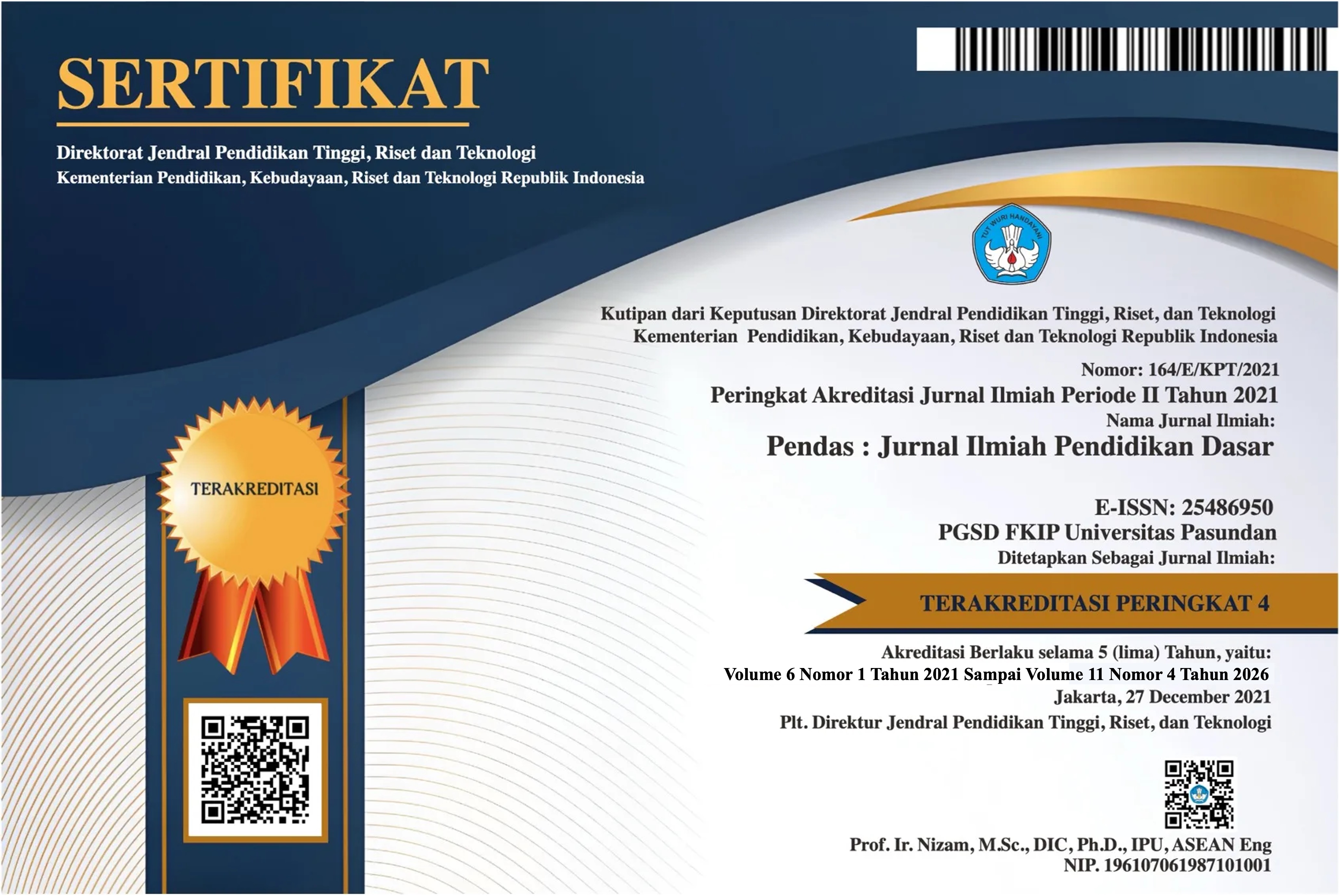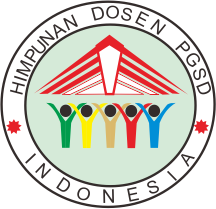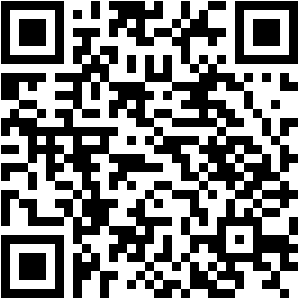THE SEVEN HABITS OF GREAT INDONESIAN CHILDREN (SHGIC) MODEL AND ITS ROLE IN HEALTH LITERACY OF FIFTH GRADE ELEMENTARY SCHOOL STUDENTS IN DKI JAKARTA
DOI:
https://doi.org/10.23969/jp.v10i04.34549Keywords:
Health literacy, 7 Habits of Great Indonesian Children, Elementary SchoolAbstract
This research is motivated by the low health literacy of elementary school students in DKI Jakarta, which affects their clean and healthy living behaviors. The study aims to evaluate the effectiveness of the 7 Habits of Great Indonesian Children model in enhancing the health literacy of fifth-grade students. The method used is a quasi-experiment involving two experimental classes and two control classes. The research instrument includes a health literacy test on four indicators: access, understanding, assessment, and application. The results of the analysis showed a significant difference between the experimental and control groups (p < 0.05) with a high N-gain increase (0.65) in the experimental group. The largest increase occurred in the assessment aspect, reflecting that students' health literacy has reached the assessment stage. The implication is that this model is effective in fostering a character-based, healthy lifestyle and can be integrated into basic education to support the achievement of SDGs 3 and 4.
Downloads
References
Blom, I. M., Cohen, E. S., Eshuis, L. V., Woudstra, A. J., Snijder, M. B., Kunst, A. E., & Fransen, M. P. (2018). Ethnic Differences in Health Literacy Among Young Adults in Amsterdam. HLRP: Health Literacy Research and Practice, 2(4), e192–e204. https://doi.org/10.3928/24748307-20180926-01
Bullock, S. L. (2024). Who chooses “healthy” meals? An analysis of lunchtime meal quality in a workplace cafeteria. BMC Public Health, 24(1). https://doi.org/10.1186/s12889-024-18284-5
Chalhoub, T. M. (2024). “Establishing healthy habits and lifestyles early is very important”: parental views of brain health literacy on dementia prevention in preschool and primary school children. Frontiers in Public Health, 12. https://doi.org/10.3389/fpubh.2024.1401806
Department of healthy, J. (2025). Laporan Tahunan Laporan Tahunan. 2025, 1–91. https://water.selangor.gov.my/info/penerbitan/laporan-tahunan
Edwita, Hasanah, U. (2020). Pelatihan Pembuatan Flashcard untuk Meningkatkan Budaya Hidup Sehat Siswa Sekolah Dasar Di Wilayah Jakarta. Jurnal ABDINUS : Jurnal Pengabdian Nusantara, 4(1), 40–52. http://ojs.unpkediri.ac.id/index.php/PPM%0Ahttp://creativecommons.org/licenses/by/4.0/
Edwita, Hasanah, U., & Sari, Y. (2023). Stimulating Environmental Awareness among Elementary School Children Through Integration of the PJBL Art Model. Eurasian Journal of Educational Research, 2023(105), 70–83. https://doi.org/10.14689/ejer.2023.105.005
Feng, J. (2023). Evaluation of the effectiveness of healthy school canteen intervention on nutritional literacy and dietary behavior among primary school students. Chinese Journal of School Health, 44(3), 348–352. https://doi.org/10.16835/j.cnki.1000-9817.2023.03.007
Gabhainn, S. N., Sixsmith, J., Delaney, E. N., Moore, M., Inchley, J., & O’Higgins, S. (2007). Health-promoting school indicators: Schematic models from students. Health Education, 107(6), 494–510. https://doi.org/10.1108/09654280710827902
Ghazian, N. (2024). Ten Simple Rules for Incorporating the UN Sustainable Development Goals (SDGs) into Environmental and Natural Science Courses. In Sustainability (Switzerland) (Vol. 16, Issue 21). https://doi.org/10.3390/su16219594
Hurha, F. (2017). Implementasi Program Sekolah Sehat Di Sd N Tegalrejo 1 ( the Implementation of Healthy School Program in Public Primary. Jurnal Kebijakan Pendidikan, Vol. VI(1), 20–28.
Jakab, Z. (2011). Constitution of WHO. Official Records of WHO, October, 100.
Kasimoğlu, N. (2024). The correlation between children’s health literacy level and healthy eating self-efficacy. Malawi Medical Journal, 36(3), 213–219. https://doi.org/10.4314/mmj.v36i3.7
Lorenz, K. A., Stylianou, M., & Kulinna, P. H. (2020). Changes in healthy behaviour knowledge of rural pupils. European Physical Education Review, 26(2), 465–480. https://doi.org/10.1177/1356336X19867732
Menengah, K. P. D. dan. (2016). Panduan Gerakan 7 Kebiasaan Anak Indonesia Hebat. Educacao e Sociedade, 1(1), 1689–1699. http://www.biblioteca.pucminas.br/teses/Educacao_PereiraAS_1.pdf%0Ahttp://www.anpocs.org.br/portal/publicacoes/rbcs_00_11/rbcs11_01.htm%0Ahttp://repositorio.ipea.gov.br/bitstream/11058/7845/1/td_2306.pdf%0Ahttps://direitoufma2010.files.wordpress.com/2010/
Misiaszek, G. W. (2022). An ecopedagogical, ecolinguistical reading of the Sustainable Development Goals (SDGs): What we have learned from Paulo Freire. Educational Philosophy and Theory, 54(13), 2297–2311. https://doi.org/10.1080/00131857.2021.2011208
Nogueira, T. (2022). Sintra Grows Healthy: development and implementation of a food literacy curriculum for primary schools. Public Health Nutrition, 25(5), 1176–1182. https://doi.org/10.1017/S1368980022000180
Oliver, T. (2023). Achieving a healthy home food environment: perspectives on parents’ nutrition education needs when living with food insecurity. Nutrire, 48(1). https://doi.org/10.1186/s41110-023-00203-0
Olson Stewart, K., Rotheram-Fuller, E., & Liou, D. (2021). Beginning Teacher Support Model: Elementary Teachers’ Resilience and Retention in Arizona. International Journal of Modern Education Studies, 5(1), 49. https://doi.org/10.51383/ijonmes.2021.75
Organization, W. H. (2022). Physical activity and sedentary behaviour: a brief to support older people. books.google.com. https://books.google.com/books?hl=en&lr=&id=dT-hEAAAQBAJ&oi=fnd&pg=PA2&dq=social+inclusion&ots=Fz8KYnnbOD&sig=5WqQZUvE8INTC1Lu8ZtJcNgjylM
Paddison, R., & Miles, S. (2020). Culture-led urban regeneration. books.google.com. https://books.google.com/books?hl=en&lr=&id=JmwJEAAAQBAJ&oi=fnd&pg=PA1894&dq=social+inclusion&ots=vFItSi1a1s&sig=Ih0L4RIii5aDKw6QgqYcaEdbyGE
Schenker, K. (2018). Health(y) education in Health and Physical Education. Sport, Education and Society, 23(3), 229–243. https://doi.org/10.1080/13573322.2016.1174845
Schuh, D. S., Goulart, M. R., Barbiero, S. M., Sica, C. D., Borges, R., Moraes, D. W., & Pellanda, L. C. (2017). Healthy School, Happy School: Design and Protocol for a Randomized Clinical Trial Designed to Prevent Weight Gain in Children. In Arquivos brasileiros de cardiologia (Vol. 108, Issue 6, pp. 501–507). https://doi.org/10.5935/abc.20170072
Stanley, K. C. (2022). A systematic scoping review of the literacy literature to develop a digital food and nutrition literacy model for low-income adults to make healthy choices in the online food retail ecosystem to reduce obesity risk. In Obesity Reviews (Vol. 23, Issue 4). https://doi.org/10.1111/obr.13414
Williams, Y. G., & Williams, Y. G. (2017). Healthy Lifestyle Changes and Academic Improvement.
Xie, R. (2021). To popularize healthy lifestyle and to form self-disciplined behaviors through health education. Chinese Journal of Behavioral Medicine and Brain Science, 30(9), 769–773. https://doi.org/10.3760/cma.j.cn371468-20210730-00433
Zubaidah, S., Ismanto, B., & Sulasmono, B. S. (2017). Evaluasi Program Sekolah Sehat Di Sekolah Dasar Negeri. Kelola: Jurnal Manajemen Pendidikan, 4(1), 72. https://doi.org/10.24246/j.jk.2017.v4.i1.p72-82
Blom, I. M., Cohen, E. S., Eshuis, L. V., Woudstra, A. J., Snijder, M. B., Kunst, A. E., & Fransen, M. P. (2018). Ethnic Differences in Health Literacy Among Young Adults in Amsterdam. HLRP: Health Literacy Research and Practice, 2(4), e192–e204. https://doi.org/10.3928/24748307-20180926-01
Bullock, S. L. (2024). Who chooses “healthy” meals? An analysis of lunchtime meal quality in a workplace cafeteria. BMC Public Health, 24(1). https://doi.org/10.1186/s12889-024-18284-5
Chalhoub, T. M. (2024). “Establishing healthy habits and lifestyles early is very important”: parental views of brain health literacy on dementia prevention in preschool and primary school children. Frontiers in Public Health, 12. https://doi.org/10.3389/fpubh.2024.1401806
Department of healthy, J. (2025). Laporan Tahunan Laporan Tahunan. 2025, 1–91. https://water.selangor.gov.my/info/penerbitan/laporan-tahunan
Edwita, Hasanah, U. (2020). Pelatihan Pembuatan Flashcard untuk Meningkatkan Budaya Hidup Sehat Siswa Sekolah Dasar Di Wilayah Jakarta. Jurnal ABDINUS : Jurnal Pengabdian Nusantara, 4(1), 40–52. http://ojs.unpkediri.ac.id/index.php/PPM%0Ahttp://creativecommons.org/licenses/by/4.0/
Edwita, Hasanah, U., & Sari, Y. (2023). Stimulating Environmental Awareness among Elementary School Children Through Integration of the PJBL Art Model. Eurasian Journal of Educational Research, 2023(105), 70–83. https://doi.org/10.14689/ejer.2023.105.005
Feng, J. (2023). Evaluation of the effectiveness of healthy school canteen intervention on nutritional literacy and dietary behavior among primary school students. Chinese Journal of School Health, 44(3), 348–352. https://doi.org/10.16835/j.cnki.1000-9817.2023.03.007
Gabhainn, S. N., Sixsmith, J., Delaney, E. N., Moore, M., Inchley, J., & O’Higgins, S. (2007). Health-promoting school indicators: Schematic models from students. Health Education, 107(6), 494–510. https://doi.org/10.1108/09654280710827902
Ghazian, N. (2024). Ten Simple Rules for Incorporating the UN Sustainable Development Goals (SDGs) into Environmental and Natural Science Courses. In Sustainability (Switzerland) (Vol. 16, Issue 21). https://doi.org/10.3390/su16219594
Hurha, F. (2017). Implementasi Program Sekolah Sehat Di Sd N Tegalrejo 1 ( the Implementation of Healthy School Program in Public Primary. Jurnal Kebijakan Pendidikan, Vol. VI(1), 20–28.
Jakab, Z. (2011). Constitution of WHO. Official Records of WHO, October, 100.
Kasimoğlu, N. (2024). The correlation between children’s health literacy level and healthy eating self-efficacy. Malawi Medical Journal, 36(3), 213–219. https://doi.org/10.4314/mmj.v36i3.7
Lorenz, K. A., Stylianou, M., & Kulinna, P. H. (2020). Changes in healthy behaviour knowledge of rural pupils. European Physical Education Review, 26(2), 465–480. https://doi.org/10.1177/1356336X19867732
Menengah, K. P. D. dan. (2016). Panduan Gerakan 7 Kebiasaan Anak Indonesia Hebat. Educacao e Sociedade, 1(1), 1689–1699. http://www.biblioteca.pucminas.br/teses/Educacao_PereiraAS_1.pdf%0Ahttp://www.anpocs.org.br/portal/publicacoes/rbcs_00_11/rbcs11_01.htm%0Ahttp://repositorio.ipea.gov.br/bitstream/11058/7845/1/td_2306.pdf%0Ahttps://direitoufma2010.files.wordpress.com/2010/
Misiaszek, G. W. (2022). An ecopedagogical, ecolinguistical reading of the Sustainable Development Goals (SDGs): What we have learned from Paulo Freire. Educational Philosophy and Theory, 54(13), 2297–2311. https://doi.org/10.1080/00131857.2021.2011208
Nogueira, T. (2022). Sintra Grows Healthy: development and implementation of a food literacy curriculum for primary schools. Public Health Nutrition, 25(5), 1176–1182. https://doi.org/10.1017/S1368980022000180
Oliver, T. (2023). Achieving a healthy home food environment: perspectives on parents’ nutrition education needs when living with food insecurity. Nutrire, 48(1). https://doi.org/10.1186/s41110-023-00203-0
Olson Stewart, K., Rotheram-Fuller, E., & Liou, D. (2021). Beginning Teacher Support Model: Elementary Teachers’ Resilience and Retention in Arizona. International Journal of Modern Education Studies, 5(1), 49. https://doi.org/10.51383/ijonmes.2021.75
Organization, W. H. (2022). Physical activity and sedentary behaviour: a brief to support older people. books.google.com. https://books.google.com/books?hl=en&lr=&id=dT-hEAAAQBAJ&oi=fnd&pg=PA2&dq=social+inclusion&ots=Fz8KYnnbOD&sig=5WqQZUvE8INTC1Lu8ZtJcNgjylM
Paddison, R., & Miles, S. (2020). Culture-led urban regeneration. books.google.com. https://books.google.com/books?hl=en&lr=&id=JmwJEAAAQBAJ&oi=fnd&pg=PA1894&dq=social+inclusion&ots=vFItSi1a1s&sig=Ih0L4RIii5aDKw6QgqYcaEdbyGE
Schenker, K. (2018). Health(y) education in Health and Physical Education. Sport, Education and Society, 23(3), 229–243. https://doi.org/10.1080/13573322.2016.1174845
Schuh, D. S., Goulart, M. R., Barbiero, S. M., Sica, C. D., Borges, R., Moraes, D. W., & Pellanda, L. C. (2017). Healthy School, Happy School: Design and Protocol for a Randomized Clinical Trial Designed to Prevent Weight Gain in Children. In Arquivos brasileiros de cardiologia (Vol. 108, Issue 6, pp. 501–507). https://doi.org/10.5935/abc.20170072
Stanley, K. C. (2022). A systematic scoping review of the literacy literature to develop a digital food and nutrition literacy model for low-income adults to make healthy choices in the online food retail ecosystem to reduce obesity risk. In Obesity Reviews (Vol. 23, Issue 4). https://doi.org/10.1111/obr.13414
Williams, Y. G., & Williams, Y. G. (2017). Healthy Lifestyle Changes and Academic Improvement.
Xie, R. (2021). To popularize healthy lifestyle and to form self-disciplined behaviors through health education. Chinese Journal of Behavioral Medicine and Brain Science, 30(9), 769–773. https://doi.org/10.3760/cma.j.cn371468-20210730-00433
Zubaidah, S., Ismanto, B., & Sulasmono, B. S. (2017). Evaluasi Program Sekolah Sehat Di Sekolah Dasar Negeri. Kelola: Jurnal Manajemen Pendidikan, 4(1), 72. https://doi.org/10.24246/j.jk.2017.v4.i1.p72-82
Downloads
Published
Issue
Section
License
Copyright (c) 2025 Pendas : Jurnal Ilmiah Pendidikan Dasar

This work is licensed under a Creative Commons Attribution 4.0 International License.


















